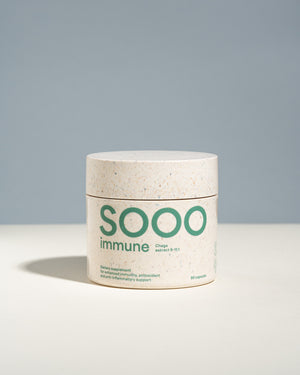Meet NAD+, the key component of life, and witness our astonishing new data!
What is NAD+
Life as we know it cannot exist without the NAD+. NAD stands for nicotinamide adenine dinucleotide.
From the simplest organisms, such as bacteria, to the most complex multicellular organisms, NAD is a key cellular component. It is a molecule found in every cell in our bodies as well.
Essential Functions of NAD+
We cannot overstate the importance of NAD+ in how living organisms work. NAD+ carries out the most essential functions at a cellular level:
- Energy production: It helps turn your food into fuel for your cells.
- Cell repair: It assists in fixing damage to your cells.
- DNA maintenance: It keeps your genetic instructions (DNA) healthy.
It is also required to “turn on” genes implicated in cells’ response to stress.
In short, NAD+ is the very essence of our vitality. It is a critical player in living organisms' function. Without it, life as we know it wouldn't be possible.
NAD+ Levels Constantly Change
It can be tempting to think that something so important, so fundamental to how our cells function and survive, would be protected at all costs.
But NAD+ is in a state of constant flux, being consumed and created again by cells.
Research has also given us insights into how NAD+ levels may change in sickness and in health.
Excess alcohol consumption, excess UV exposure, sleep deprivation, poor diet, infection and a sedentary lifestyle are among the physiologic stressors linked to NAD+ depletion.
NAD+ Declines as We Age
The problem is, that as we age, our NAD+ levels naturally decline. That restricts our cells from their normal functioning and contributes to many issues we experience with aging.
A rapidly growing body of evidence is revealing that decreased NAD+ levels are associated with a wide variety of diseases and physiologic stresses.
How to Boost NAD+
Studies in rodents and people are showing that healthy habits may be associated with higher levels of this valuable cellular resource.
Healthy lifestyle choices are associated with higher levels of NAD+:
- Eating a whole food, balanced diet with plenty of B3s prevents NAD+ deficiency
- Exercise is associated with increased NAD+
- Caloric restriction (fasting) is associated with increased NAD+
- Supplementation with NAD+ precursors can also boost NAD+ beyond what is required to avoid a vitamin deficiency
The Invaluable NAD+ Precursors
To produce NAD+, cells use building blocks often termed NAD+ precursors. A precursor is a smaller building block used to create a larger molecule. These precursors undergo a set of chemical conversions that result in the production of NAD+.
Dietary NAD⁺ precursors such as niacin (NA), nicotinamide (NAM), and nicotinamide riboside (NR) are the building blocks that cells use to create more NAD+.
An analogy of the three different pathways these three building blocks follow to convert into NAD+ is illustrated in the graphic below.
It demonstrates how the three different pathways from each vitamin form have varying degrees of complexity that require more work by the cell to reach the shared end goal of NAD+ production.
NA and NAM both reach the top of the mountain (successfully produce NAD+), however, the paths are winding, and the path for NAM includes inefficiencies in the form of obstacles. Traveling these paths takes more time and energy, which ideally, we would like to conserve in efforts to maximize energy production.
The path of NR to NAD⁺ is analogous to the ease of using a ski lift to reach the top of a mountain.
It is much more direct, saving both time and energy - ultimately resulting in the greatest increase in cellular energy production. This concept is further supported by both preclinical and clinical research that suggest NR is the most efficient and effective form of vitamin B3 at boosting NAD+ levels.

Astonishing New Data From Our Clinical Trial
The purpose of our clinical trial was to evaluate the effects of NAD+ boosters, so we could choose only the most effective one and turn it into a product. We could never imagine, how much of an effect we can reach per only three weeks of taking supplements!
First, we took the blood samples from 20 people and measured their NAD+ levels in our laboratory. Then, for 21 days, everyone consumed a daily dose of 800 mg of various NAD+ boosters, including NR. After that, we took the blood samples again and measured the NAD+ levels, without expecting dramatic change.
But here are the results in the graph below.
First, NR was an absolute star of the show, performing much better than other NAD+ boosters. (The graph shows the effects of NR in particular)
Secondly - and that is the astonishing part - NR almost doubled the levels of NAD+ in our patient's blood only in three weeks of supplementation! That is as much of the increase of NAD+ as you would lose naturally in around 10 years!

So we can finally declare, that NR (nicotinamide riboside) is an enormously effective NAD+ booster, potentially leading to better health and slowing down some aspects of aging.













